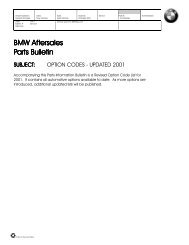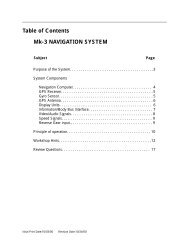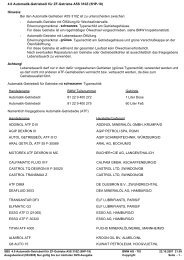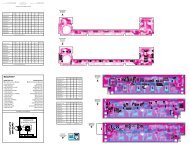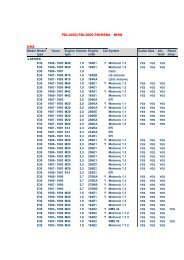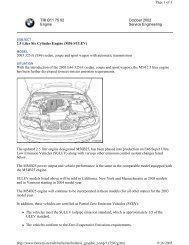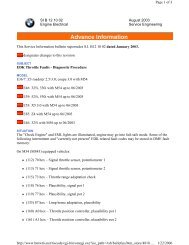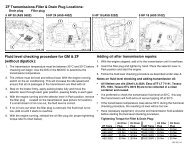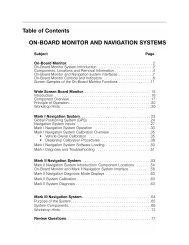Electronic Transmission Control Introduction 1-10-03.qxd - GE39
Electronic Transmission Control Introduction 1-10-03.qxd - GE39
Electronic Transmission Control Introduction 1-10-03.qxd - GE39
Create successful ePaper yourself
Turn your PDF publications into a flip-book with our unique Google optimized e-Paper software.
Pressure Regulation<br />
Pressure regulating solenoids modify line pressure for hydraulic operation. Solenoids for<br />
pressure regulation are referred to as EDS valves in ZF transmissions. GM transmissions<br />
have a few terms such as Force Motor Solenoid, Variable Bleed Solenoid, and DR solenoid.<br />
Regardless of the name used, they are all used to control main line pressure based on throttle<br />
position and engine load.<br />
On ZF transmissions, EDS valves are also used to control “Overlap Shifting”. This allows<br />
for improved shift comfort by controlling pressures during shifting.<br />
Depending upon transmission application, pressure regulating solenoids can be controlled<br />
using Pulse Width Modulation on B+ or B-.<br />
The TCM will increase line pressure by regulating current flow to the pressure regulator.<br />
Current flow is controlled by pulse width modulation. When the duty cycle is low, the current<br />
flow to the solenoid is low. This allows spring pressure to close the valve. Therefore<br />
maximum line pressure is achieved. As the duty cycle increases, the current flow also<br />
increases. The valve opening increases, which allows pressure to be released through the<br />
pressure discharge which in turn decreases line pressure.<br />
Main line pressure is also increased during failsafe operation and when needed during<br />
“Adaptive Hydraulic Pressure <strong>Control</strong>” functions. Mainline pressure will also default to maximum<br />
pressure when power to the TCM is switched off.<br />
31<br />
<strong>Electronic</strong> <strong>Transmission</strong> <strong>Control</strong>





